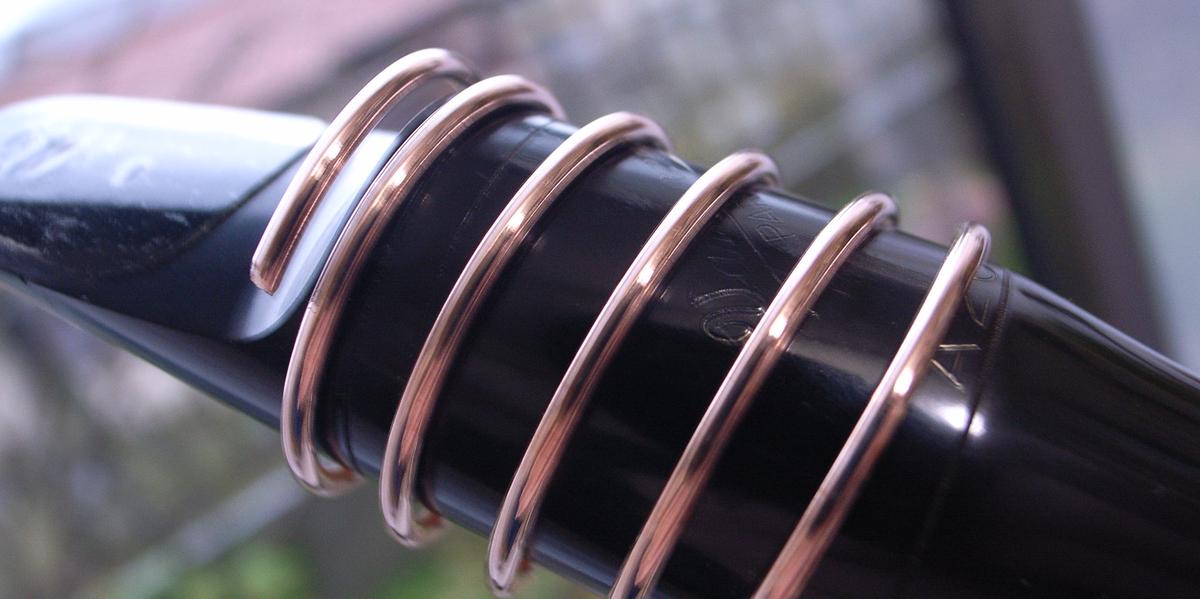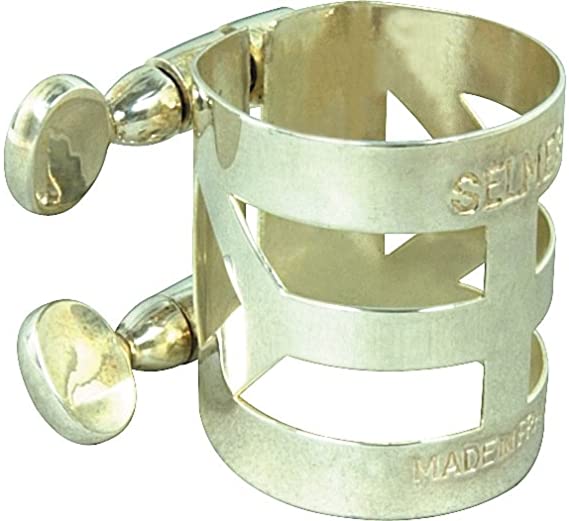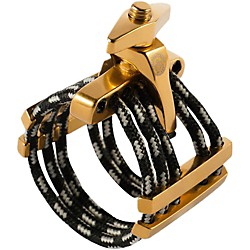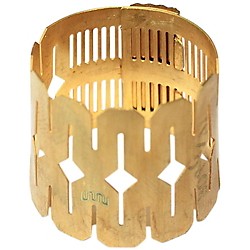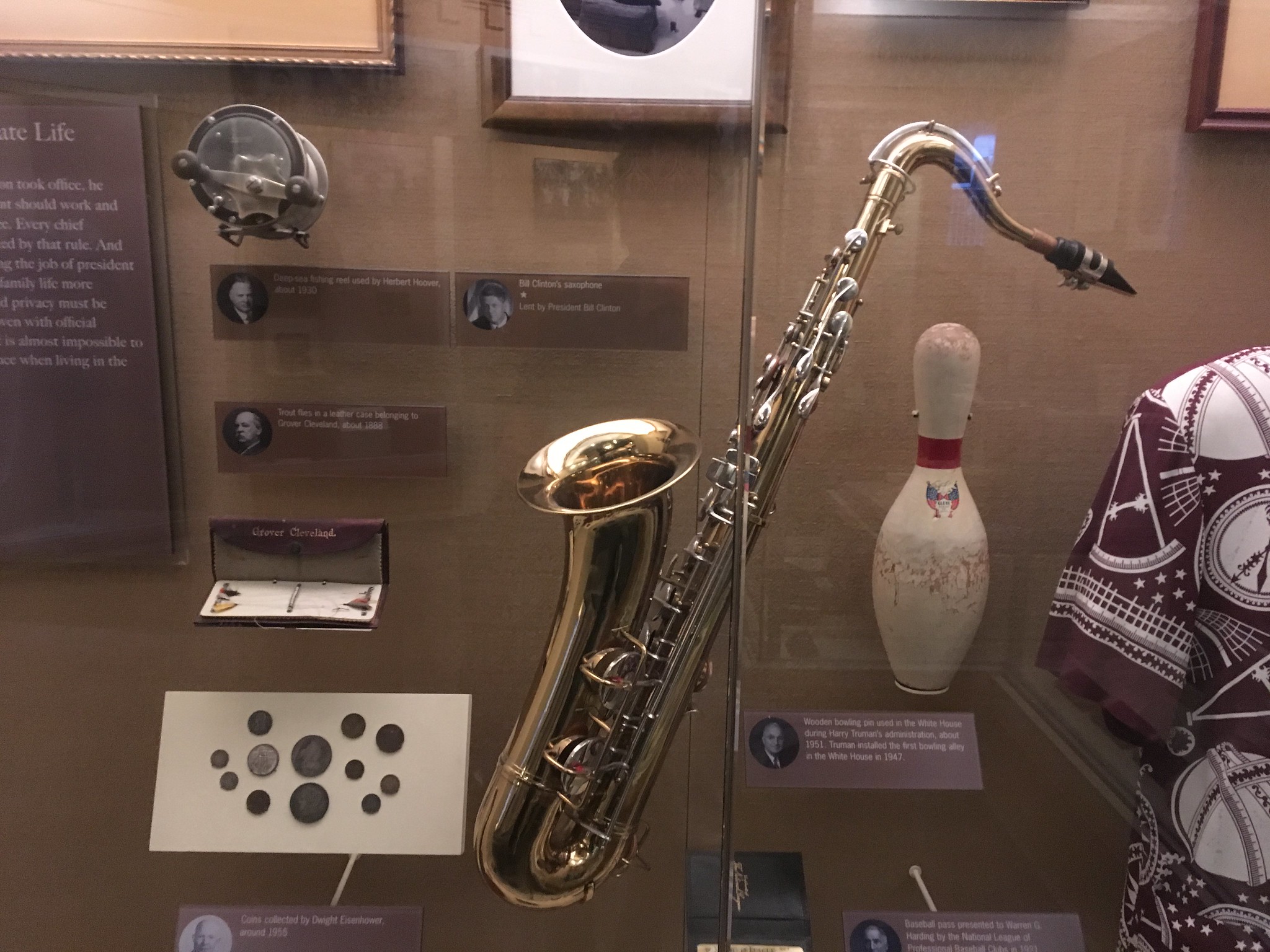Saxophone player Jamal shows up to rehearsal and begins to put together his instrument. Looking over his shoulder at his friend Steve, he notices that he has a new, rose gold colored, ligature that has no screws.
His curiosity peaked, he asks Steve what ligature that is and if it actually changes anything, “Yeah man! I can get my low notes to come out way easier now!” Steve exclaims.
Believe it or not, the ligature can be a very personal choice for saxophonists who choose to dive into the world of aftermarket saxophone accessories. This is for a wide variety of reasons.
Some artists say that certain ligatures affect how their horn responds in certain ranges, while others say that it lets them dial their tone in to be just the way they want it by letting their reed resonate freely.
In this article, we will be going over some of the most popular ligature brands/models and discussing the pros and cons of each one.
Two-Screw Designs
The two screw design is the earliest and most commonly found form of ligature for saxophone. Made from various types of metals, it is most often the standard ligature that comes with a brand new instrument as each brand can cheaply and efficiently make their own ligature that fits with most mouthpieces.
While the most basic design, there are some fan favorites that have risen to the top as the decades have gone by, some have been made famous by particular musicians, and some have used high-quality materials and a more refined style as a way to separate themselves from the others
Selmer 402/404
This ligature works well with skinnier, typically metal, mouthpieces. It was popularized heavily by Michael Brecker, one of the most influential jazz sax players of all time.
The ligature is known for not only looking good on-stage but also for its ability to make the whole range of the saxophone more even and consistent.
Rico H-Ligature
Rico has been a longtime producer of great reeds, however, they recently have dipped their toes into making a custom ligature of their own.
Their H-Lig has become popular amongst many high school musicians in particular. Why do you ask? Quite simply, it is cheap enough for parents to buy without remorse, and it can change how your reeds feel enough that high schoolers can feel the difference.
If you want to add some punch and clarity to your sound, this is a great step-up ligature for you. However, be careful as this product can make your reeds feel a bit stiffer than normal.
Bonade
Another fairly cheap option, we have the Bonade. On a cursory look, it would seem that it is no different from any of the other standard two-screws that might come with any mouthpiece.
Upon closer inspection, however, one will see that the screws are actually facing the wrong direction, left instead of right. This is because the ligature is designed to have the screws resting not on the bottom of the mouthpiece, but on the top.
Designed this way to enable longer reed life, as the reeds would no longer have pressure indentations from the traditional split between the screws, this feature is the only tangible difference between it and other options.
1 Screw Designs
What is the most immediate difference between these saxophone ligatures and others? You guessed it, these only have one screw for you to worry about.
Though a simple change, this change often comes with a slight price jump for its innovation.
Vandoren: M/O,Optimum
King of the classical reed, Vandoren also has added ligatures to their expanding portfolio.
Starting with their most well-known offering, the Optimum ligature is made of metal and will help you fit in well with the typical classical sound. Clear but without too much sound manipulation is how I would describe the sound from this ligature.
On the contrary, the M/O can open up your sound. With its lightweight, almost minimalist design, it is able to let your reed vibrate to its fullest. More pros for this ligature stem from the cradle shape on the reed side. This cradle shape does just that, it cradles your reed and enables you to put the ligature in the perfect spot on the reed every time effortlessly.
Rovner Versa
If you have ever used a leather ligature, then you have most likely used a Rovner. Coming in as probably the second most played ligature, the standard Rovner is prolific, however, it isn’t what I would recommend if you wanted a leather 1-screw ligature.
The Rovner Versa is the natural evolution of leather ligatures. These ligatures are especially great for jazz musicians who like to play loud but don’t want their tone to sound ragged and uncontrollable when they do.
The only potential downside to these, and leather ligatures in general, is that they can make you feel like your tone is too dry. The leather can sometimes mute some reed vibration if paired with the wrong mouthpiece.
Silverstein
Silverstein is one of a few brands that has cropped up within the past decade and promptly taken the sax world by storm. If they don’t currently own one, most saxophone players have played on and praised one at some point.
With a huge variety of colors and an innovative design using a combination of kevlar cord, metal bars that can adjust how your reeds respond, and a tightening mechanism that also can adjust the brightness or darkness you want in your tone, the level of control that you have over your sound and look is honestly kind of crazy.
Truly the Cadillac of 1-screw ligs, these are also priced accordingly. Going for anywhere from $85 at the cheapest to over $300 at its most expensive, the Silverstein ligatures are a pretty penny and not geared for the beginning saxophonist.
Francois Louis
The former brand at the top of the aftermarket ligatures, the Francois Louis Ultimate Ligature is a great option for someone wanting to get the maximum resonance and tone from their instrument.
It rose to prominence once international jazz star Joshua Redman adopted it into his list of equipment.
While its design frees up the reed and lets it vibrate as much as is probably possible, it comes with a few flaws.
First off on the list of cons is its durability. It is, to be frank, very temperamental. Made of a combination of wire and thin pieces of metal, it can be very easy to bend and isn’t as easy to bend back into shape as a standard 2-screw ligature.
Secondly, it likes to move around even after you tighten it. If you want to push your mouthpiece in or out to account for your tuning, be aware that you will most likely have to reposition your ligature as well.
Ring Ligatures (no screws)
These are the most uncommon and least adjustable products on the list for this article. However, don’t let that fool you; these can elicit some of the strongest reactions of support from their fans.
Roberto’s Winds
The first and only ligature on this list that is made of wood instead of leather or metal. The RW ligature boasts to be made with the most resonant woods available and makes the claim that it also can darken your sound while maintaining great ease of playing and clarity of tone.
After buying one myself I can attest to these claims. I got their darkest sounding option, the African Blackwood, and found it to sound very clear and definitely darker than my other ligatures at that time.
A great option for classical musicians or jazzers that are looking for a darker, more Joe Lovano/Tivon Pennicot sound, in other words, dark but clear, with an apt ability to sound brighter and aggressive when pushed. The RW lig does come with a couple of drawbacks, unfortunately.
First and foremost, you have to remember that it is made out of wood and must treat it as such. This means taking care not to leave it out in the heat without making sure to oil it from time to time (the same as a clarinet).
Secondly, it is more sensitive to drops and hits than other ligatures. My ligature met its unfortunate end when I dropped it on cement on a gig, giving it a hairline crack that actually went from front to back and could only be marginally solved with glue.
Lastly, it often will move around if you try and make any mouthpiece adjustments. Since there are no screws to tighten, you have only the pressure that you get from pushing the ligature far enough back that the circumference of the mouthpiece creates some friction with the ligature.
Rigotti Flexitone
In contrast to the RW lig, the Flexitone is made of metal, and actually has a great amount of adjustability built into the design.
This adjustability is the Flexitone’s main point of competitiveness when compared to other ring ligatures.
Like many other models, the Rigotti has equal pressure distribution on the reed, and it looks sleek and classy like the other ring ligs. However, its design allows for the musician to change reed sizes, and even mouthpieces, without worrying if the ligature will still fit as well or even at all as with other non-adjustable ring designs.
The only con in this ligature in my experience is the fact that it can’t put quite as much pressure on your reeds due to its lightweight flexible metal design. This can lead to some reeds not fully laying flat on the mouthpiece if they swell up from playing during long practice sessions, or when you are using older reeds.
SYOS
SYOS is the newest kid on the block by far. The company has only been around for little more than 3 years, and already they’re taking on the big boys and girls over at Vandoren, Rico, and all the others.
Their ligature, like their mouthpieces, are all made from high-quality plastics and made using 3D printing technology.
These are essentially the inverse to the RW ligs in design. Where the RW gets its friction to hold onto the mouthpiece from the front and back edges having slight raises, the SYOS design feels like it minutely squeezes the middle portion for its contact patch.
Coming with every SYOS mouthpiece, they are easily the most consistent and reliable ligature that comes with a mouthpiece as standard. The plastics it is made of are resonant and durable, and while not adjustable, they do fit on most hard rubber mouthpieces that I have tried with it.
The only downside is it can make your tone just a little hollow, and the ligature doesn’t feel quite as locked on if you aren’t using a SYOS brand mouthpiece.
In Summary
When delving into the world of ligatures it is necessary to have a price point in mind and an idea of what you are looking to improve in your ligature experience. If you are looking for a durable stress-free option, go 2-screw. If you are looking for significant tone changes or a more lightweight design, then the 1-screw is for you. And if you are looking to be bold and take a chance, then look for a ring ligature.
